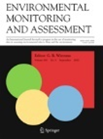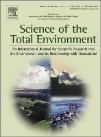
|
A Mechanical Automatic Urinal-Toilet Flusher for Swach Bharat Mission(Procedia Environmental Sciences)
(,35 ,,185-192,Year : 2016)
|
A flush urinal-toilet disposes human waste by using water through a drainpipe to another location. A series of urinal-toilets are fitted in offices, malls, multiplexes, educational institutions, bus railway stations, airports, commercial complexes, stadia and other public places. Most have manual flushing systems like push button, trigger, pull chain, etc. however, use of such manually operated flush can spread germs and bacteria when contacted and thus users avoids to flush or lead to wastage of water if used. Now a day’s laser or infrared sensor operated flushes is also used in the places of high commercial value and importance but are expensive and required continuous O&M. Therefore, the sanitary facility may remain un-flushed leading to unhygienic conditions and foul smell. Thus need for a low cost automatic flushing apparatus which can flush the right-controlled amount of water and avoid direct contact thus conserving water as well as maintaining personal hygiene and sanitationThe present invention relates to a specially designed mechanical automatic urinal-toilet flusher and a mechanism thereof, which utilizes the weight load/pressure of the person using the urinal-toilet for automatic flushing the urinal- toilet with the specified or measured quantity of water to prevent odors, soil drain and scale buildup. It ensures the compulsory, regular and un-intentional flushing of the urinal-toilet without any direct hand contact of the user to the flush and also conserve water at the same time is simple and cheap, which can be fitted-retrofitted to new as well as existing water pipe line of the urinal-toilets.
|

|
Waste Management in India: E-waste recycling & Bio-methanation -Case studies(Journal of Solid Waste Technology & Management )
(Roychoudhuri, Reshma, Debnath, Biswajit, Jayakumar, Sandhya, Maloo, Ajay ,Vol. 42,1,748-759,Year : 2016)
|
Waste management system in India at present is taking a significant change. Majority of the problems are associated with the management of municipal solid waste, E-waste and CD waste. Though the MSW rules 2000 were implemented long back, the rules pertaining to e-waste management has been implemented in 2012. All the rules related to waste management are undergoing revision at present which is expected to lead to a sea change in effectiveness in addition to some new rules in the country. The traditional system of landfilling or dumping is now being replaced by different waste treatment processes. This paper deals with two case studies, of a E-waste recycling plant and a Bio-methanation plant in India, which were studied by a visiting team from the recently held IconSWM 2015 in Bangalore. It has been observed that both the plants are running effectively to curb the disposal of wastes into dumping grounds as well as recover materials and energy. This study will present the materials and energy recovery processes adopted in both the plants and proposed methodologies to make the systems more effective. This study will also highlight the general and specific issues and challenges related to E-waste recycling and biomethanation plants and elaborate on how to overcome those. The results of the study will help the researchers and implementers for further actions.
|

|
An Effective Mosquitoes-Insects Killing Machine (MIKM) (6th IconSWM 2016: 6th International Conference on Solid Waste Management 2016)
(,,,,Year : 2016)
|
|
Mosquitoes-Insects carry many potentially dangerous diseases like mosquito-borne viral encephalitis, dengue, chicken guinea, yellow fever, malaria, filariasis, etc. and affects around one to three million people globally. To minimize risk and to avoid bites, protective measures practiced includes mosquito coils, repellent mats, vaporizers, aerosol and body cream or lotions etc. But there are certain limitations and draw backs associated with the existing products-systems which includes health implication on users due to uses of chemicals, fire hazards and safety, effectiveness, ease of handling/operation and economy. Moreover, it doesn’t completely destroy the mosquitoes-insects and just keeps them at bay, in order to provide the temporary relief for limited hours in the specified area. More importantly due to the recent outbreak and spread of deadly ZIKA VIRUS in African and American continent due to mosquitoes, it is urgently required to control the mosquitoes’ menace. So, there is a need and market for indigenous, low cost, eco-friendly efficient mosquito controlling device. The patented (3013DEL2015) invention describes a use of developed low cost non-hazardous material in a specially design machine which produces mosquito-insect attractants in more economical and convenient way, which lures the mosquitoes-insects towards the source i.e. machine and gets eventually kill by electric field. The invention targeted to be cost effective for controlling the mosquitoes’ problem without any negative implications on user health or environment.
|

|
Separation of WPCBs by dissolution of brominated epoxy resins using DMSO and NMP: A comparative study(Chemical Engineering Journal)
(,280,,391-398 ,Year : 2015)
|
Printed circuit boards (PCBs) in electrical and electronic equipment (EEE) abide of valuable and hazardous materials and due to its complex and discrete make up across manufacturers, processing of waste PCBs (WPCBs) is a massive challenge. And therefore either completely novel or improved processes are needed for recycling of WPCBs and recovery of valuable materials from it. Present comparative study, was performed for processing WPCBs using solvents N-methyl-2-pyrrolidone (NMP) and dimethyl sulfoxide (DMSO). Various parameters, which include WPCB sizes; solid to liquid (S/L) ratio; temperature and time, were investigated to understand the WPCBs processing by dissolving bromine epoxy resin using solvents. Results showed that the rate of removal and separation of the bromine epoxy resin (BER) increases with respect to increasing various parameters. Optimum condition of complete separation of WPCBs using NMP were S/L ratio of 1:5, WPCB size/area of 4 mm/16 mm2 and 100 °C for 90 minutes, whereas for DMSO the optimum dissolution of bisphenol A were obtained in S/L ratio of 1:2, size/area of 6 mm/36 mm2 at 90 °C for 90 min. Overall, NMP proves to be better solvent for bromine epoxy resin than DMSO in terms of bisphenol A dissolution and separation of various layers of WPCB. Used solvents can be vaporised–condensed under the decompression for regeneration. This novel process can be an eco-friendly and effective option for separation and recovery of various valuable materials such as metals, glass fibres, etc. from WPCBs. Further research and testing is needed for precise evaluation between two processes using NMP or DMSO solvents, in terms of the valuable material recovery from WPCB and process techno-economics.
|

|
Non-Ferrous Metals in E-waste: Opportunities and challenges(18th International Conference on Research and Industrial Practices exclusive on Non-ferrous Minerals and Metals (ICNFMM 2014))
(Kalpana Tomar,,,,Year : 2014)
|
E-waste comprises of old, end-of-life electrical and electronic appliances which have been disposed of by their original users. E-waste contains many hazardous and toxic constituents that may negatively impact the environment and affect human health, if not properly managed. Also it contains valuable and precious material including the non-ferrous metals which can be a good source of business opportunities if being recovered and recycled. E-waste management system followed in developing countries faces many country specific issues viz. socio-economic conditions, lack of infrastructure, absence of appropriate legislations for E-waste, approach and commitments of the concerned, etc. The paper presents E-waste scenario in developing countries like India, potential of valuable non-ferrous valuable materials, recycling/recovery processes followed and their environmental and occupational hazards besides various challenges for E-waste management in developing countries like India. E-waste is viewed as a potentially valuable resource for precious and non-ferrous metals. Due to which, the management of E-waste, if properly carried out, is an opportunity as it is often called as “urban mining”.
|

|
Reduction in the Carbon Footprint of Coal-Fired Thermal Power Plants by Promoting Compact Fluorescent Lamps and Light-Emitting Diodes in Households, Offices, and Commercial Centers(Assessment of Carbon Footprint in Different Industrial Sectors)
(,Vol 2,,105-134 ,Year : 2014)
|
"The electricity consumption of compact fluorescent lamps (CFLs) and light-emitting diode (LED) lamps is low, making them a useful tool for minimizing the rapidly increasing demand for electrical energy in India and elsewhere. This chapter aims to project the likely electrical energy conservation in a scenario of complete replacement of existing fluorescent tubes (FTs) by CFLs or LEDs at the Council of Scientific and Industrial Research (CSIR)-National Environmental Engineering Research Institute (NEERI), including the financial repercussions and indirect reduction in emissions of greenhouse gases (e.g. CO2, N2O, CH4) and carbon footprint, as well as a few important air pollutants (e.g. SO2, NO, black carbon, suspended particulate matter (SPM), mercury) in a coal-fired thermal power plant. The calculations show that the institute could save around 129,870 and 164,970 kW h of electricity per annum by replacing FTs with CFLs and LEDs, respectively, thereby saving approximately INR 1357,142 (US$21,935.37) and INR 1723,937 (US$27,863.85) in electricity costs per year for CFLs and LEDs, respectively. The use of CFLs and LEDs would be able to minimize approximately 47,127.14 and 59,863.94 kg of CO2–C equivalent emissions over a 100-year time horizon, respectively. Moreover, reductions of approximately 961, 1,039, 10, 390, 19, and 0.55 kg of SO2, NO, BC, SPM, PM10 and Hg emissions per year, respectively, could be achieved in electricity conservation by replacing FTs with CFLs at CSIR-NEERI. Reductions of approximately 1,221, 1,320, 13, 495, 25 and 0.7 kg of SO2, NO, BC, SPM, PM10 and Hg emissions per year, respectively, could be achieved by replacing FTs with LEDs at CSIR-NEERI. "
|

|
E-waste an urban environmental pollution: problems and prospects in developing countries(International Conference on Solid Waste 2013: Innovation in Technology and Management at Hong Kong)
(P. S. Dutt,333,,,Year : 2013)
|
"Electronic waste or E-waste comprises of old, end-of-life electronic appliances such as computers, laptops, TVs, DVD players, refrigerators, freezers, mobile phones, MP3 players etc. which have been disposed of by their original users. E-waste contains many hazardous constituents that may negatively impact the environment and affect human health if not properly managed. The problem of E-waste has forced Environmental agencies of many countries to innovate, develop and adopt environmentally sound options and strategies for E-waste management, with a view to mitigate and control the ever growing threat of E-waste to the environment and human health. E-waste management is given the top priority in many developed countries, but in rapid developing countries like India, it is difficult to completely adopt or replicate the E-waste management system followed in developed countries due to many country specific issues viz. socio-economic conditions, lack of infrastructure, absence of appropriate legislations for E-waste, approach and commitments of the concerned, etc. The paper presents E-waste scenario in developing countries, E-waste composition, categorization, prospects of recoverable, recyclable and hazardous materials found in the E-waste, recycling and recovery options followed And the overview and need of the laws and regulation related to E-waste for better E-waste Management."
|

|
E-waste scenario in India, its management and implications(Journal of Environmental Monitoring and Assessment)
(P. S. Dutt
,172 ,1-4,249-62,Year : 2011)
|
Electronic waste or E-waste comprises of old, end-of-life electronic appliances such as computers, laptops, TVs, DVD players, refrigerators, freezers, mobile phones, MP3 players, etc., which have been disposed of by their original users. E-waste contains many hazardous constituents that may negatively impact the environment and affect human health if not properly managed. Various organizations, bodies, and governments of many countries have adopted and/or developed the environmentally sound options and strategies for E-waste management to tackle the ever growing threat of E-waste to the environment and human health. This paper presents E-waste composition, categorization, Global and Indian E-waste scenarios, prospects of recoverable, recyclable, and hazardous materials found in the E-waste, Best Available Practices, recycling, and recovery processes followed, and their environmental and occupational hazards. Based on the discussion, various challenges for E-waste management particularly in India are delineated, and needed policy interventions were discussed.
|

|
A roadmap for development of sustainable e-waste management system in India(Journal of Science of the Total Environment)
(P. S. Dutt,409,1, 1 ,19-32,Year : 2010)
|
The problem of E-waste has forced Environmental agencies of many countries to innovate, develop and adopt environmentally sound options and strategies for E-waste management, with a view to mitigate and control the ever growing threat of E-waste to the environment and human health. E-waste management is given the top priority in many developed countries, but in rapid developing countries like India, it is difficult to completely adopt or replicate the E-waste management system in developed countries due to many country specific issues viz. socio-economic conditions, lack of infrastructure, absence of appropriate legislations for E-waste, approach and commitments of the concerned, etc. This paper presents a review and assessment of the E-waste management system of developed as well as developing countries with a special emphasis on Switzerland, which is the first country in the world to have established and implemented a formal E-waste management system and has recycled 11 kg/capita of WEEE against the target of 4 kg/capita set by EU. And based on the discussions of various approaches, laws, legislations, practices of different countries, a road map for the development of sustainable and effective E-waste management system in India for ensuring environment, as well as, occupational safety and health, is proposed.
|